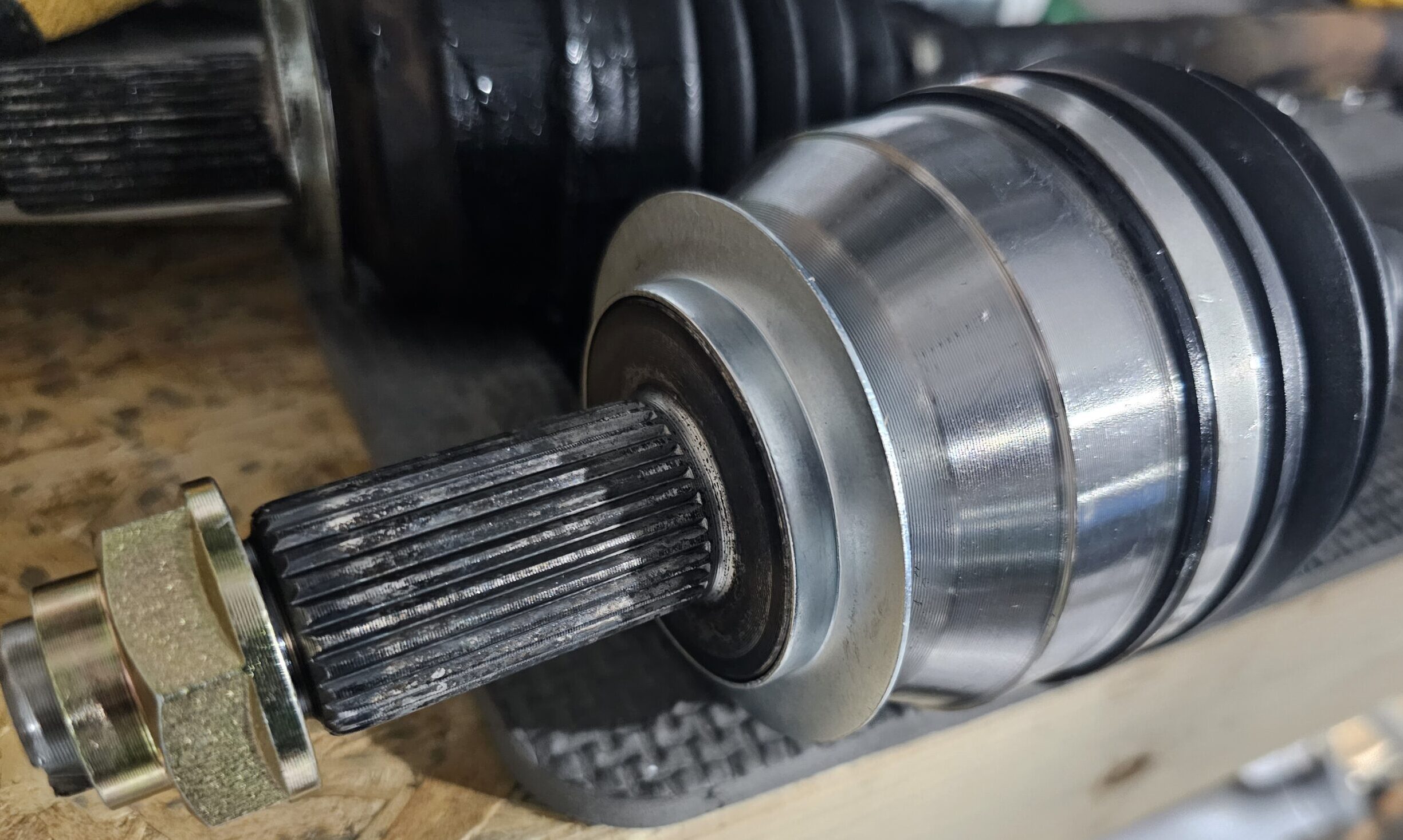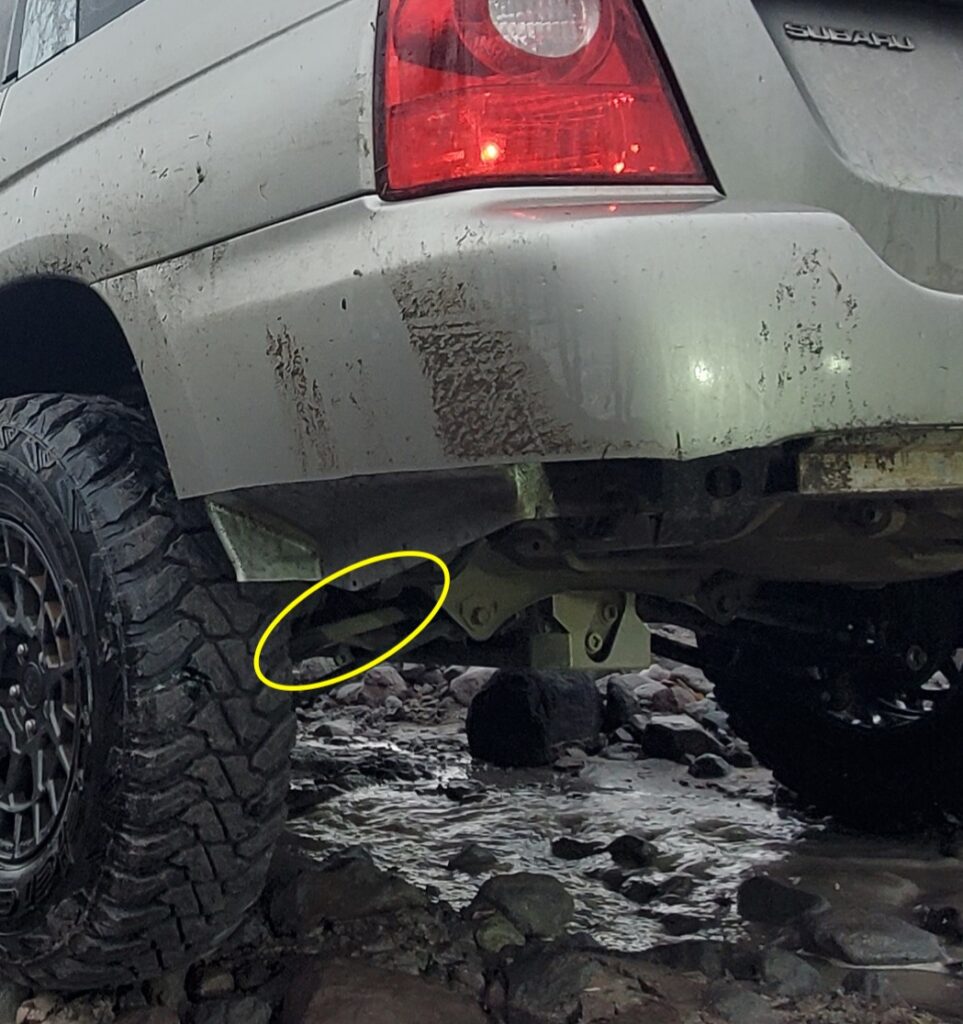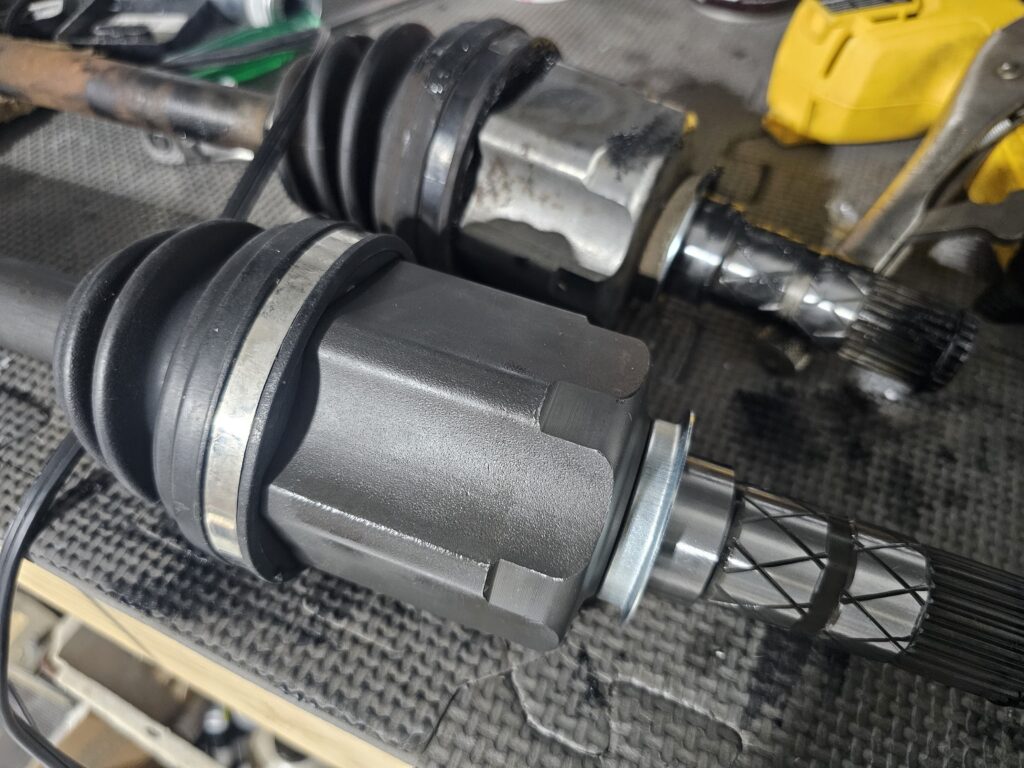
When it comes to modding your Subaru for off-road use, lifting it to gain some extra ground clearance is one of the first things that should be done. However, as a long-term Subaru owner and enthusiast who’s explored countless trails and tackled challenging trails, I understand the apprehension that can come with lifting your Subaru. Specifically, the concern that lifting a Subaru could potentially lead to a shortened lifespan of the CV axles.
I’ll be the first to admit that the technical possibility of shortened CV axle lifespan is real. Altering your vehicle’s suspension geometry and increasing the operating angles of the CV axles does in fact generate additional stress, shortening their overall life. However, I’d like to share my experience on this topic, which may help dispel the notion that lifted Subarus are plagued by CV axle problems the moment they’re lifting.
In my years of off-roading and owning a lifted Subaru, I haven’t encountered nearly as many CV axle issues as some might believe to be the norm. Instead, I’ve found that a combination of proper modifications, good maintenance, and thoughtful driving practices has allowed me to enjoy the benefits of owning a lifted Subaru without having to change CV axles every 6 months.
Understanding CV Axles:
CV axles, also known as half-shafts in some cases, are components of nearly every vehicle’s drivetrain. They transfer power from the transmission and differential to the wheels, allowing them to turn at various angles while maintaining a constant rotational velocity. CV axles are flexible and are designed to accommodate the suspension’s movement, and steering angles ensuring a smooth ride. Without CV axles, your Subaru wouldn’t be able to go anywhere or would only be able to travel on flat surfaces in a straight line.
Symptoms of Failing CV Axles:
These are the most common tell-tale signs of a bad CV axles. Watch out for these things and replace parts as needed:
- A common sign of a failing CV axle is a vibration that increases with speed. You may feel it throughout the vehicle, but lots of folks report feeling it through the steering wheel. It may feel similar to an unbalanced tire. As the CV joint internals wear out, it operates much less smoothly. I’ve experienced it as a vibration that resembles driving over slightly bumpy asphalt. It can also feel pronounced while decelerating while in gear. In my case, I felt it most obviously while decelerating during my most recent axle failure.
- If you notice a clicking or ticking noise when you turn your vehicle, you may have a failing CV axle. The sound comes from the metal-on-metal contact in the joint that occurs when the axles loses its grease and wears out. It’s a definite signal that you need to replace your CV axles promptly. While these noises can also stem from other suspension component failures, if you hear clicking sounds during turning, it’s important to have a professional inspect your vehicle.
- Grease contamination under the vehicle is common sign that your axle has a torn boot. The grease will usually land on the exhaust in some Subaru models and create a bad smell. But in some cases you’ll never see the grease unless you regularly inspect your undercarriage. If you see that your CV axles have leaked grease but don’t yet have any clicking or vibration, you can likely save the axle by replacing the boot and regreasing the joint.
- I have also had a “knocking” and squeaking sound coming from bad axles in the past. It’s hard to explain, but the knocking sound is similar to a few marbles clanking together. I have only heard the squeaking when decelerating and turning while in gear. This may be uncommon for most people, but it’s something that I’ve experienced.
Lifting a Subaru:
The process of lifting a Subaru involves increasing the vehicle’s ground clearance, typically by installing lift kits such as strut top spacers, lift springs, or long-travel coilovers. When a lift kit is installed, it increases the angle at which the axles sit, introducing additional stress. It’s important to note that lifting a Subaru beyond 2-2.5 inches, unless additional subframe spacers are installed, will max out the CV axle angles, leading to accelerated damage.
Factors That Impact Subaru CV Axles:
The relationship between lifting a Subaru and CV axle damage may seem complex, but here are the major factors:
1. Angle Increase:

As previously mentioned, lifting a Subaru often results in an increase in the angle at which the CV axles operate. Steeper angles can generate additional stress on the axles, potentially accelerating wear and tear. I also suspect that when a lift kit is installed on a Subaru that already has mileage on it, the CV boots have already gotten “used” to being at a certain angle. Once that angle gets adjusted, the boot gets flexed and is more susceptible to tears. This is just my theory, but I believe that it is a factor.
Even when staying at or below a 2 inch lift, there are times during off-road driving where the suspension will be fully extended and adding wear to the axles. This isn’t a huge issue but is certainly something to consider when lifting a Subie and driving it off-road.
2. Suspension Geometry:
The type of lift kit and how well it maintains proper suspension geometry is crucial. A well-designed lift kit can help reduce the increased angle of the CV axles and minimize potential strain. We recommend a reputable kit from a company like Primitive Racing, ADF, RalliTek, or one of the other brands mentioned in this article: Best Subaru Lift Kits. Each of these brands supply all the right parts to space the trailing arms and sub frames properly at various lift heights.
3. Off-Road Demands:
How you drive your lifted Subaru off-road matters. Heavier duty off-roading, such as attempts (notice I said attempts) at rock crawling or extreme trail driving, can place more stress on the CV axles. Aggressive driving techniques like quick acceleration while attempting to make a tight turn over an obstacle can fatigue the axle. When we’re driving our cars fast and hard through jarring sections of a trail with uneven surfaces, it also shortens the life of the CV axles.
Let’s face it. Driving our cars more aggressively will shorten the life of a lot of different components whether your vehicle is lifted or not. This is something to consider as you think about CV axle life.
4. Maintenance and Inspection:
I think this is the most vital point of this entire discussion. When is the last time you were underneath your Subaru and visually inspected the inner and outer boots of your axles? Torn CV boots happen to all Subies. I’ve had this happen on Subarus that weren’t lifted or driven hard. The CV boots are rubber and simply begin to wear out over time. Regular maintenance and inspection of your CV axles is vital in making sure you get the most out of them.
When researching this issue over the years, I found Justin at All Wheel Drive Auto to have very good insight on this topic from his experience working on customer cars. He explains in his article “Subaru CV Boots And Axle Problems Explained” that one of the best ways to prolong axle life is to detect a boot failure early. When the boot begins to crack, replace it early before any damage is done. This keeps costs down and yields a far superior repair to using aftermarket axle units.
Promptly addressing issues like torn CV boots can extend the life of your axles. If a boot tears, it no longer holds the grease that lubricates the axle. A torn boot also fails to prevent dirt, sand, water, or mud from entering the joint and damaging the machined surfaces.
I have made it a habit to inspect my axles at every oil change. So far, the only axle failure that I’ve had on a lifted Subaru was when I had a torn boot that escaped my attention for a couple months. I had driven the car through hundreds of miles of trails without realizing that I was letting in contaminants. Eventually the axle started to click and I knew it was time for a replacement.

5. Replacement Choice:
In the event that one of your axles needs replaced, failure to use an OEM or OEM remanufactured unit will typically result in a short axle lifespan. I haven’t found many aftermarket axles that are worth the time and money to install.
On the topic of aftermarket axle options, I was talking to Patrick over at Anderson Design and Fabrication and he said that the best choice, if OEM isn’t an option, is the Cardone HD. There have been a few premature failures with these axles but I’ve found that other people have had good experience with them overall. I recently installed one of these axles in my daily driver to test their durability. I’ll keep this post updated as I put miles on it. As of right now, I’ve put roughly 200 miles on it with no issues but that number will go up quickly. If you’ve used the Cardone HD axles before, please comment below letting us know what kind of car you put them in and how your experience was.
I have a theory that when a CV boot tears due to having its angle changed after a lift installation or just due to age, many owners replace the whole axle with a cheap aftermarket unit and then associate the quick failure with the lift kit. When in reality, the aftermarket axle would have failed even without a lift. I own a non-lifted Subaru Legacy that had an axle failure. When I got under the car to inspect them, I noticed it was an aftermarket “parts store” axle. This axle had actually been installed by the previous owner less than 10,000 miles prior to failure.
I’m not the only one that agrees with this idea. I found that Justin with AWDA also thinks that the original Subaru axles that came with our cars are of significantly higher quality than anything available in the aftermarket. He says “ We have seen everything from vibrations at idle and very pronounced vibrations under load to boots that last just a year before they tear open again as compared to the original boots that lasted 5 to 6 years on average.” I highly recommend checking out his site for further info on everything regarding Subarus. I’ve picked up a lot from him over the years.
My Thoughts and Experience:
As I mentioned before, I do realize that lifting our cars will technically accelerate the wear and tear of not only the CV axles, but every wear and tear item in our cars. However, my theory is that it’s not as serious of a problem as some may think. Frequent failures seem to be avoidable if regular inspections are completed and broken parts are replaced correctly. After having owned lifted Subarus for about ten years I simply have not had the number of axle failures that others complain about.
I maintain my cars and drive with caution but I do indeed drive them very hard when on the trails. I’ve taken my lifted Subaru to many of the same places that I take my Jeep and use it in extreme conditions. I truly believe that always checking the condition of the boots and replacing them as soon as possible after they stop being sealed has been crucial to them handling all of the off-road driving that I do.
Here is an odd tidbit that I have discovered over the years that I believe has helped my CV axle boots last longer. I use AT205 in a spray bottle to coat the axle boots periodically when I’m under the vehicle. AT205 is a liquid polymer that rejuvenates plastics and rubber components excellently. I randomly found out about it from a Scotty Kilmer video and thought “what the heck I’ll see if it’s any good just for fun.” It doesn’t repair physical damage to seals and suspension components. But it does help repair rubber and polyurethane components that have lost their pliability or that have “dried out” the way that many CV boots do over time. This isn’t a good way to fix an axle boot that is torn, but if you see micro tears in it, this product can possibly extend its life. It may seem crazy, but I’ve talked to people who’ve used this stuff in older cars to repair dried out seals with great results. I even saw one video online where a guy put it in a Jaguar with a leaky rear main seal and it fixed the problem within a few drive cycles.
To recap, here are the main takeaways that I’d like to share:
- Always use a reputable lift kit
- Regularly inspect your CV axles for boot tears
- Re-boot your OEM axles in a timely manner if a boot failure occurs
- If a replacement is necessary, use OEM or a very reputable aftermarket unit if OEM is not available
- Avoid “parts store” axles
- Be realistic about the demands that off-road driving with larger tires will have on your Subaru
- Try testing a conditioner such as AT205 on your axle boots to prolong pliability
Overall, I think lifting Subarus is a great idea if you want to get out and explore the world. They’re comfortable, economical, and quite capable with a lift kit and the right tires. If the idea of constantly replacing CV axles has put you on the fence regarding whether or not you should do it, I say go for it. Follow these tips to extend their life as much as possible and get the most capability out of your Subie.

2 thoughts on “Does Lifting A Subaru Damage CV Axles? 10 Years Of Experience”
Good info. I was about to pull the lift off my Subaru after multiple CV axle problems. But it looks like I’ll be buying some OEM axles instead. Thank you!
Glad to hear! What kind of Subaru do you have? The oem axles have been the best units I’ve found so far. I’ve only had an issue with one of them even though I drive my cars pretty hard.